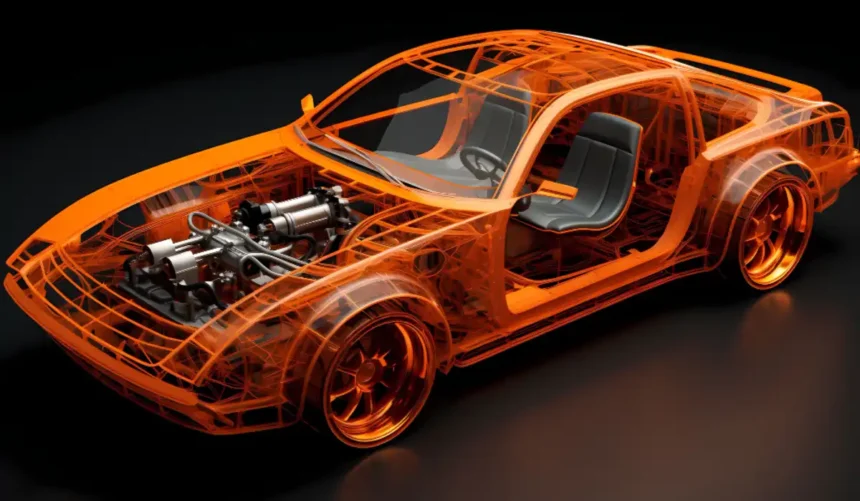Do you want to save money while keeping your car in top condition? If you’re tired of constant trips to the mechanic and want to take control of your car’s upkeep, DIY car maintenance is the answer. Maintaining your vehicle doesn’t have to be complicated, and with a few simple tasks, you can extend its life, improve performance, and save money. In this article, we’ll explore five essential DIY car maintenance tasks you can tackle today, offering clear steps and tips to get you started. Let’s dive in!
5 DIY Car Maintenance Tasks You Can Do Today: Save Money and Keep Your Car Running Smoothly

1. Check and Replace Your Oil: Keep Your Engine Running Smoothly
One of the most critical DIY car maintenance tasks is changing your engine oil. Regular oil changes ensure your engine runs efficiently, reduces wear, and prevents overheating.
Why Is It Important?
Over time, oil breaks down and becomes less effective at lubricating engine parts. Neglecting this task can lead to increased engine wear or even permanent damage, resulting in costly repairs.
Tools You’ll Need:
- Oil filter wrench
- New oil filter
- New oil (check your car’s manual for the right type)
- Funnel
- Drain pan
Step-by-Step Process:
- Warm Up Your Car: Run your engine for a few minutes to warm the oil.
- Locate the Drain Plug: Using your manual, find the oil drain plug under your car.
- Drain the Old Oil: Place the drain pan underneath and remove the plug to let the old oil drain out.
- Replace the Oil Filter: Unscrew the old filter with the wrench and screw in the new one.
- Refill with New Oil: Using a funnel, pour in the fresh oil, ensuring you don’t overfill.
How Often Should You Change Oil?
Every 3,000 to 5,000 miles, depending on your vehicle and oil type.
2. Check and Refill Fluids: Maintain Performance
Keeping your car’s fluids at optimal levels ensures everything runs smoothly, from braking to steering. This task is quick, easy, and one of the most effective ways to maintain your car’s health.
Key Fluids to Check:
- Brake fluid
- Power steering fluid
- Transmission fluid
- Coolant
- Windshield washer fluid
Step-by-Step Process:
- Brake Fluid: Open the brake fluid reservoir and check the level. Add more if needed but never exceed the recommended level.
- Power Steering Fluid: Check the dipstick for proper levels and top up if necessary.
- Transmission Fluid: Use the dipstick to check for low fluid. Refill as needed but be cautious not to overfill.
- Coolant: Ensure your coolant is at the recommended level, especially during extreme weather.
- Windshield Washer Fluid: Top off the fluid to ensure clear visibility while driving.
Why Is It Important?
Proper fluid levels are critical for safe and efficient car operation. Neglecting fluids can lead to breakdowns and expensive repairs.
Read More: Top 10 Car Tech Innovations You Need to Know About
3. Inspect and Replace Your Air Filter: Improve Fuel Efficiency
A clogged air filter can reduce your car’s fuel efficiency and performance. Replacing your air filter is a simple DIY car maintenance task that you can do in minutes.
Signs Your Air Filter Needs Replacement:
- Reduced acceleration
- Decreased fuel efficiency
- Unusual engine sounds
Tools You’ll Need:
- New air filter (check your car manual for the correct type)
Step-by-Step Process:
- Locate the Air Filter Housing: Usually found near the engine, it’s a rectangular or cylindrical box.
- Remove the Old Filter: Unclip or unscrew the housing and take out the old filter.
- Install the New Filter: Place the new filter in the same position and secure the housing.
How Often Should You Replace It?
Every 12,000 to 15,000 miles, or as recommended by your vehicle’s manual.
4. Check Tire Pressure and Tread: Ensure Safety and Efficiency
Proper tire maintenance is crucial for your safety and fuel efficiency. Checking your tire pressure and tread regularly is an easy DIY task that can prevent tire wear and blowouts.
Why Is It Important?
Underinflated or worn-out tires increase fuel consumption and reduce handling, making driving less safe.
Tools You’ll Need:
- Tire pressure gauge
- Tire tread depth gauge (or a penny)
Step-by-Step Process:
- Check Tire Pressure: Use the tire pressure gauge to ensure your tires are inflated to the manufacturer’s recommended PSI.
- Inspect Tread Depth: Place a penny into the tire tread with Lincoln’s head upside down. If you can see the top of his head, it’s time to replace your tires.
- Rotate Tires (Optional): If you’re comfortable, rotating your tires can extend their life.
How Often Should You Check Tire Pressure?
At least once a month and before long trips.
5. Replace Wiper Blades: Enhance Visibility in Bad Weather
Worn-out wiper blades reduce visibility during rain or snow, making driving dangerous. Replacing them is one of the easiest DIY car maintenance tasks you can do today.
Signs Your Wiper Blades Need Replacement:
- Streaking on the windshield
- Squeaking noise when in use
- Uneven contact with the windshield
Tools You’ll Need:
- New wiper blades (check your car’s manual for the correct size)
Step-by-Step Process:
- Lift the Wiper Arm: Pull the wiper arm away from the windshield.
- Remove the Old Blade: Press the tab where the wiper blade connects to the arm and slide it off.
- Install the New Blade: Slide the new blade onto the arm and ensure it clicks into place.
How Often Should You Replace Wiper Blades?
Every 6 to 12 months, or sooner if they show signs of wear.
FAQs: DIY Car Maintenance
Q: Can DIY car maintenance really save me money?
A: Absolutely! Performing basic maintenance tasks can save you hundreds of dollars each year by avoiding mechanic fees for simple jobs.
Q: What are the risks of doing DIY car maintenance?
A: The main risk is improper execution. Always follow your car’s manual and use the right tools to avoid potential damage.
Q: How do I know which oil or parts to use?
A: Your vehicle’s manual will provide detailed specifications for oil, filters, and parts. You can also ask for assistance at an auto parts store.
Q: Can I perform all of these tasks in one day?
A: Yes! With a little preparation and the right tools, you can easily complete these DIY car maintenance tasks in a single afternoon.
Conclusion: Take Control of Your Car’s Health
By mastering these five DIY car maintenance tasks, you’ll save money, boost your car’s performance, and gain confidence in maintaining your vehicle. Not only do these tasks improve your car’s efficiency, but they also help you avoid expensive repairs in the future. Whether you’re an experienced DIY enthusiast or just starting, these steps are simple enough for anyone to tackle today.
Are you ready to take control of your car’s maintenance and start saving money? Get started now, and your car will thank you!








